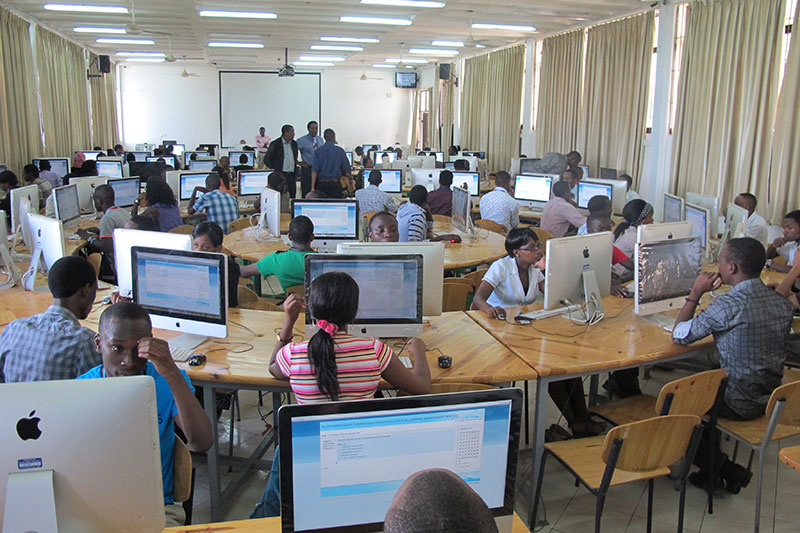SYSTEM RESOURCES (IRQ, DMA and I/O ADDRESSES)
System resources are what allocate and setup your hardware components helping preventing hardware to work without causing issues with other hardware within your computer. System resources are setup by one or more of the following:
- Interrupt Request (IRQ)
- Input/output (I/O)
- Direct memory access (DMA)
- Memory Addresses
To find out about system resources in Windows vista/7 follow these steps:
- Right Click My Computer and go Manage
- Computer Management
- Device Manager
WHAT IS A IRQ?
An IRQ or Interrupt request line allows a hardware device inside of the computer a direct line to the Microprocessor and tells the Microprocessor to stop what it is doing and wait until it has further instructions. Every PC computer has a maximum of 16 IRQs and is prioritized in the computer according to the importance of the device.
Here is the IRQ Listing
IRQ Channel Assignment
0 System Timer
1 Keyboard
2 Cascading with 9
3 COM 2 or COM 4 (Serial or IRDA devices)
4 COM 1 or COM 3 (Serial or IRDA devices)
5 LPT2 or Sound Card
6 Floppy Drive Controller
7 LPT1 (Parallel Devices)
8 Real Time Clock
9 Cascading with 2
10 Open
11 Open
12 PS/2 Mouse Connector
13 Math Co‐processor
14 Primary Hard Drive Controller
15 Secondary Hard Drive Controller
Here is an example of the IRQ Properties found on a typical computer.
WHAT IS A DMA?
A DMA or Direct Memory Access is a pathway provided by the hardware to allow the hardware direct access to the computer's memory. This feature allows devices to bypass the CPU and write their information directly to the main memory.
DMA Channel Assignment
0 Open
1 Sound Card
2 Floppy Drive Controller
3 Open (ECP or parallel port)
4 2nd DMA Controller
5 Open
6 Open
7 Open
WHAT IS A I/O?
An Input Output (I/O) represents the location in memory that is designated by use of various devices to exchange information amongst themselves and the rest of the PC.
Device I/O Address Range
System Timer 040‐043
Keyboard 060‐064
COM 1 3F8‐3FF
COM 2 2F8‐2FF
COM 3 3E8‐3EF
COM 4 2E8‐2EF
LPT1 378‐37F
LPT2 278‐27F
Floppy Drive Controller 3F0‐3F7
Sound Card 220‐xxx
IDE Primary 1F0‐1F7
IDE Secondary 170‐177
ASSIGNING A RESOURCE SETTING
Many devices still in use today use Jumpers to setup the Resource settings for a hardware device. If your card has Jumpers, it is recommended that you set the jumpers to available settings on your computer and then install the software on the computer to help resolve issues from occurring.
If your card has no jumpers / dip switches it is a good possibility that the card is a Windows card (Plug N Play card). This indicates that you should be able to place the card within the computer and Windows 95 or Windows 98 will setup the card for you. Many of these cards are configured through the software used to install the card and or device manager.
CHANGING RESOURCES
Within Windows 95 and Windows 98 most PnP (Plug N Play) cards can be manually adjusted through Device manager. If your device is encountering conflicts with another device within Device Manager double click the device within the device category. Such as double clicking a 3COM NIC icon under Network Adapters. Within the properties of the device click the Resource tab. In Resources uncheck the box which says 'Use automatic settings' once unchecked you will then be able to change the Basic Configuration, as you change the Basic configuration each of the resource settings will change. If you only have one option for resource settings it's a good possibility that the device may be a Legacy device or may only work with one configuration mode.
ALL IRQs ARE USED NOW WHAT?
If your computer is utilizing all IRQs unfortunately there are only a few ways around this, which can be very complicated. The first and easiest way would be to attempt to remove devices from the computer to allow IRQs to become free and or substitute for external devices. The other option would be to attempt to assign the IRQ settings to IRQ settings that may already be used by another device. However when doing this it is recommended that you choose a device that is not going to be frequently used. Windows may report that there is a device conflicting however in some instances the devices can work on the same IRQ the devices however will not be able to work at the same time.
CAN I ADD AN IRQ?
No, unfortunately with PC's they are limited to 00‐15. The latest and greatest PC's will also have this limitation. However you can add devices such as a SCSI card to the computer daisy chain a hard drive / CD‐ROM drive and other hardware devices and because the SCSI card uses ID addresses when the hardware devices are hooked up to the SCSI card they will not be taking an IRQ. Therefore you will be able to utilize up to 7 devices on one IRQ. Another recommended connection to PC computers would be the USB port, which allows up to 127 devices to be connected at once using only one IRQ.
IRQs NOT RECOMMENDED
When connecting devices it is recommended that you stay away from IRQ 9, which is a cascade port with IRQ 2. However generally it is a good idea to assign devices that you wish to move and do not plan to use to IRQ 9 to allow extra IRQs for a device you may plan to use. A good example of this recommendation is moving the MPU‐401 device, which is a midi device, used for musical keyboards.







.jpeg)










